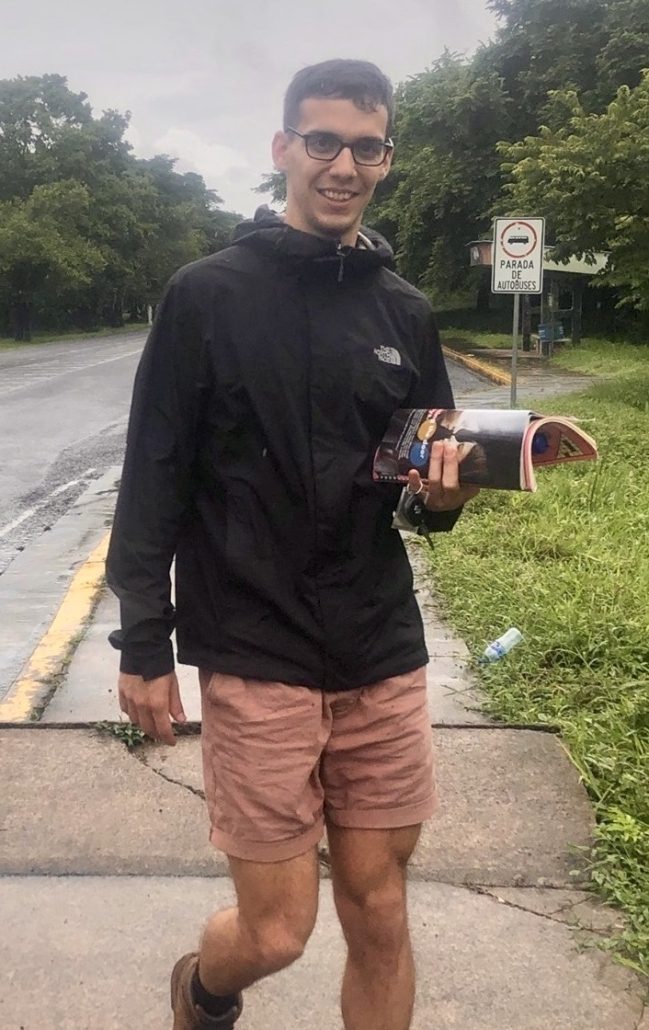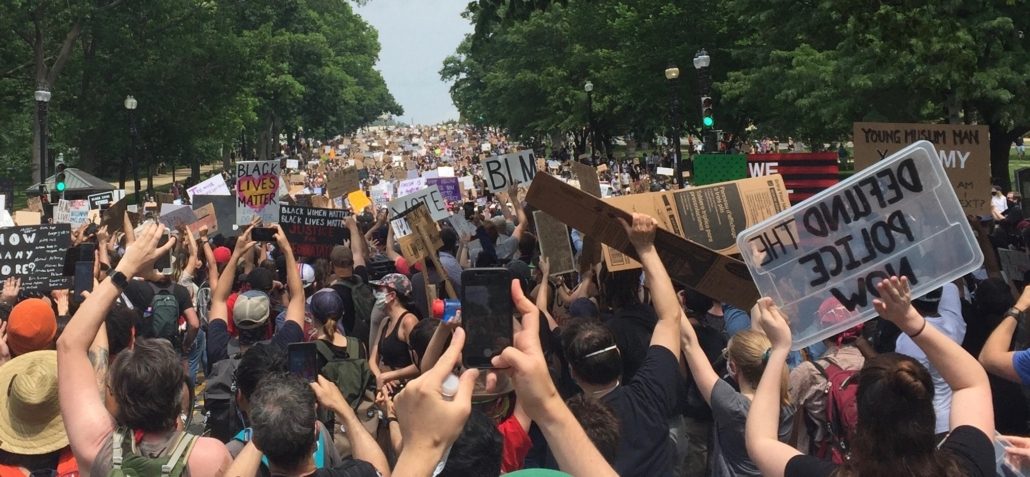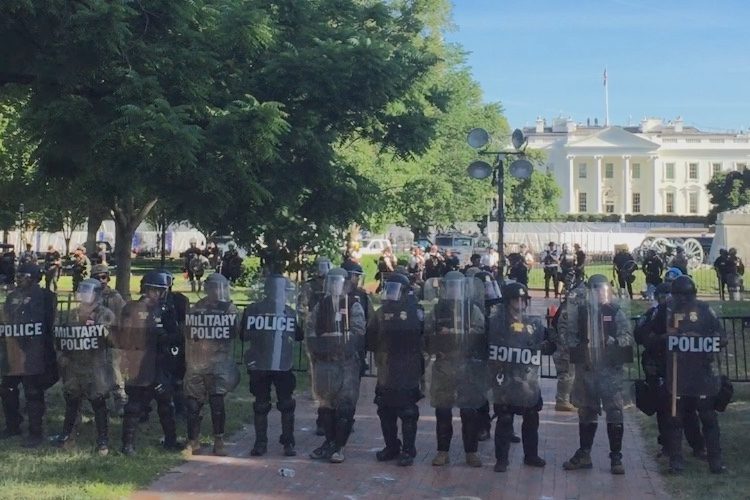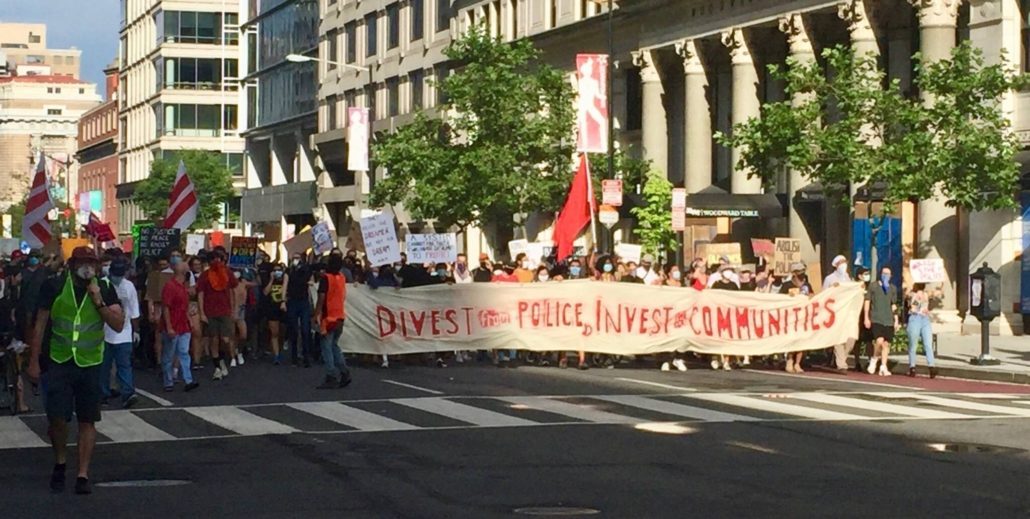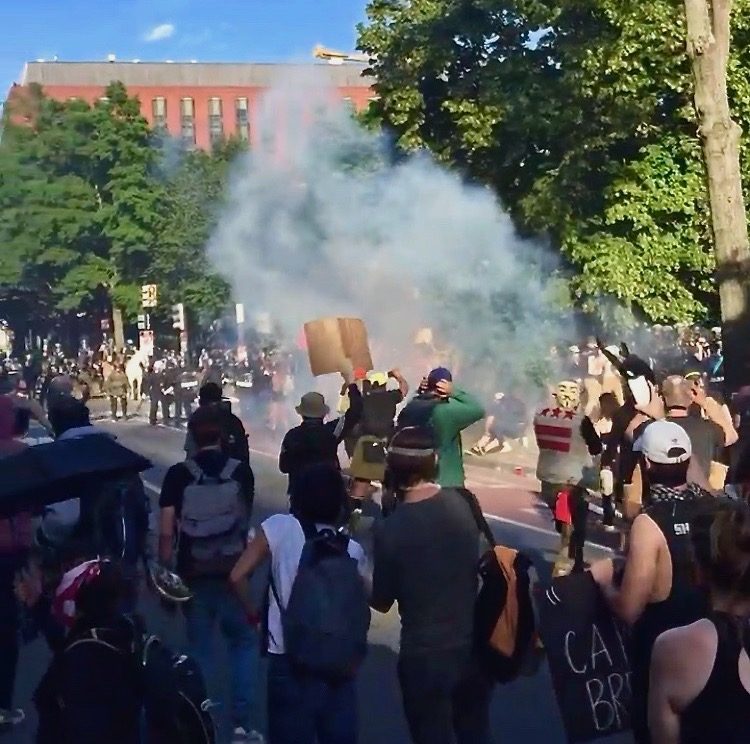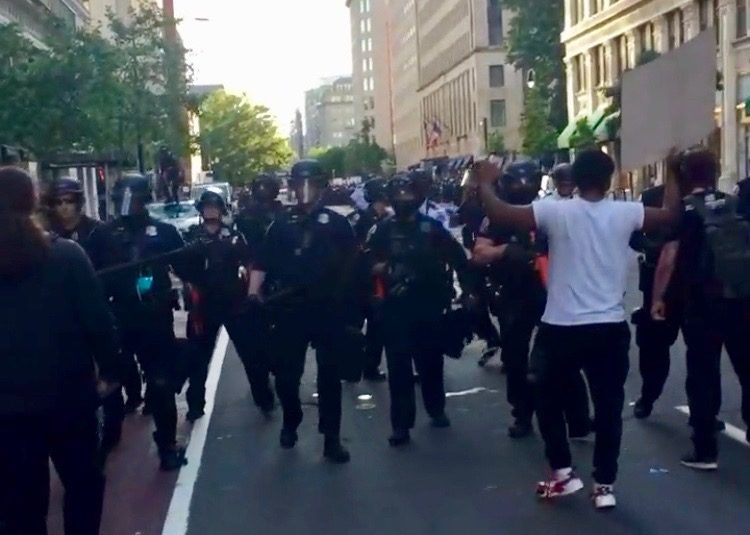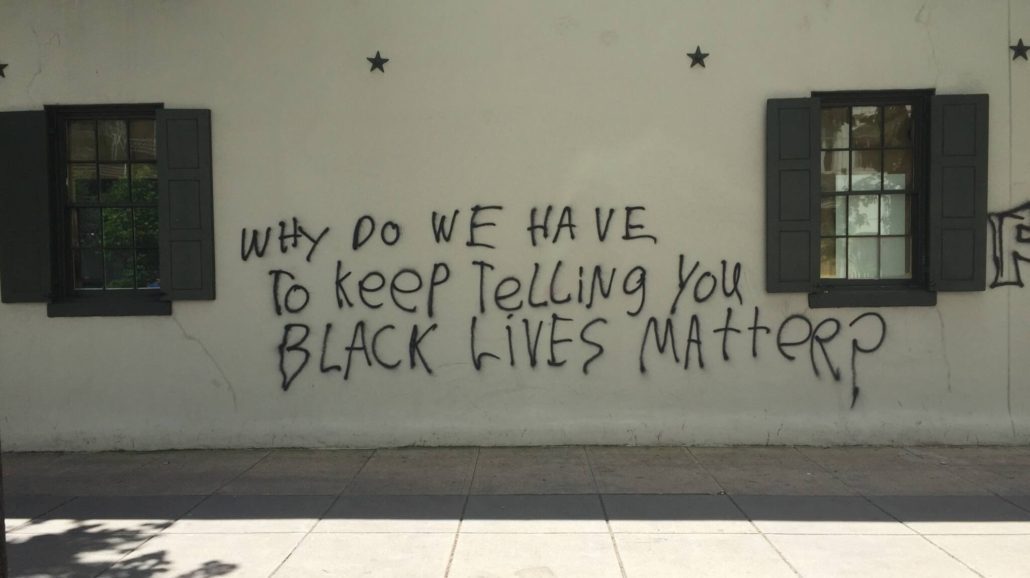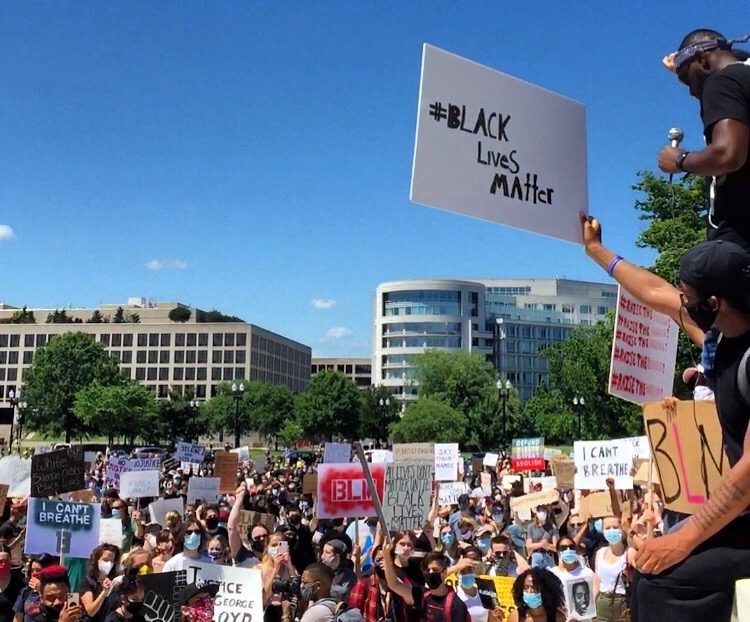Jake Gandolfi was an integral part of the Earth Equity team before heading off to graduate school to study for a Masters in Public Affairs at American University in Washington, DC. Prior to his time with Earth Equity, he was in Nicaragua as a Peace Corps volunteer before he was forced to leave because of political unrest.
Jake took part in the Black Lives Matter protests in Washington, and I asked him to write a piece for us about his experiences. We are grateful for his dedication to social justice and proud to be associated with him!
Peter Krull
CEO, Earth Equity Advisors
A Change is Gonna Come
By Jake Gandolfi
It was the fourth straight day I went to protest in Washington, DC. I stood surrounded by a crowd of about 1,000 at Lafayette Square, which sits directly in front of the White House. We all peacefully took a knee in memory of the Black lives lost in 2020. As I lowered myself to kneel, the wounds on my right knee made by a rubber bullet two days prior began to shoot pain from my leg to the rest of my body. For fear that I fall to the ground from the pain, I grasped the newly erected metal fence surrounding the entirety of the Square and the White House complex.
For about two minutes the crowd remained in a moment of silence. Suddenly, the person next to me, a Black man probably a few years older than myself, stood up and began to play music from a portable speaker he brought. This has been a common sight at these protests. It has been a great way for protestors to share songs of past civil rights movements and speeches given by past civil rights leaders.
I immediately recognized the first song the man played. The cascading violins of Sam Cooke’s “A Change is Gonna Come” make for an incredibly identifiable intro. The violins are quickly joined by violas, then by a variety of horns in a fluttering dance of melodies not unlike sounds of a full orchestra. The song itself plays like a symphony, with each verse acting as separate movement. It is a powerful, and at times, haunting, arrangement of music that accompany Cooke’s melancholic lyrics of his struggles as a Black man living in the United States. I have long been an avid fan of Sam Cooke, and can sing many of his songs from memory. This one is a particular favorite. At once I started singing the first lines:
“I was born by the river,
in a little tent.
Oh, and just like the river,
I’ve been runnin’ ever since.”
My voice was hoarse from four days of chanting and yelling, coupled with lingering side effects of tear gas inhaled the day before. I am no professional singer, and in that condition I most certainly sounded even worse. The man next to me playing the music responded encouragingly, though, and began to sing as well.
We sang together through the first two verses. As the third verse started, the man reached out to me and said, “take my hand.” I was still kneeling, but pulled myself up after his gesture. My left hand now in his right, we held up our arms and sang through the final two verses in unison. The people in our immediate vicinity quietly watched and listened on. Meanwhile the two of us faced directly the wall of Secret Service, National Park Police, and National Guard troops, all in full riot gear, that stood before us just on the other side of the fence.
We knew that they could hear us.
The Protests
The protests that erupted after the death of George Floyd at the hands of police quickly spread to the nation’s capital. Emotions in this historically Black city ran high, with anger, frustration, and heartache being the most palpable. For the first few days, I was at home trying unsuccessfully to focus on work for the two graduate classes I was taking. In a separate tab on my computer a live stream of the DC protests constantly played.
As the days went by the crowds grew bigger, and as the crowds grew bigger so did the size of police presence. Most days the protests remained peaceful, other days not so much. As I looked on from my tiny computer screen, I quickly realized I needed to be there. Even though I will never truly understand the experience of a Black person living in America (I am White), I have heard enough stories to know I had to be there.
Protests Day 1
I first went down on May 30. Even though it was a particularly hot Spring day, the crowds were huge. For hours we marched from the Lafayette Square, to the Capitol, and around the White House complex. By this day Secret Service had already erected crowd control barriers around Lafayette Square, and shut down Pennsylvania Avenue leading to the White House.
Late into the afternoon, the demonstrations landed at the west entrance to the White House on Pennsylvania avenue. For several more hours our crowds, and the police keeping us from marching any further down Pennsylvania Avenue, faced each other in a standoff.
While all was peaceful throughout most of the day, things spiraled quickly. Three empty Secret Service patrol cars, parked where the crowd had gathered, were vandalized. In response, police brought reinforcements and began shutting down the streets behind us. They then began making moves to clear the streets.
First the concussion grenades came out, then those at the front were pepper sprayed. Police mounted on horseback began maneuvering to support the wall of riot police at the front, in what amounted to an unimaginable and terrifying show of force. Protesters came running from the front lines, eyes bloodshot and faces red from the pepper spray. The victims called out for anybody who could help flush out the chemicals. I ran to put distance between myself and the police, shocked and confused at what I was seeing.
I was persuaded by a friend that it was best time to leave.
Protests Day 2
The following day, fresh with the images of the events that transpired the day before, I went back out to protest again. I was steadfast in my resolve to have my voice and face supporting these protests. I was amazed to find that the crowds had grown even larger. Real energy was developing.
From morning until night, we marched. We moved from Lafayette Square, to the National Mall, to the Capitol, and back again. The entire time I was amazed to see our huge crowds, brought together under a collective desire for social justice, hold ourselves to only marching and chanting. Any attempts at vandalism were reigned in immediately by other demonstrators. That’s the way it was, no violence, just peace.
Early into the evening a dramatic increase in police presence appeared. Albeit unsettling to see, they seemed to let the demonstrations continue unhindered. A large demonstration of which I was a part began to march east down H Street from Lafayette Square.
We made it only a block and half down when the explosions started. Unprompted, a large police regiment in full riot gear thrust themselves into the middle of the demonstration, effectively cutting it in half.
I turned around to see walls of police pushing the newly divided crowds away from each other. Behind them more police were shooting concussion grenades just over our heads and pepper spraying those who refused to budge. I ran to the front, urging protestors to keep their hands up, as to not show any signs of provocation. I thought this would help ease the force being used. That’s when an officer took aim and shot two rubber bullets into my right leg, one hitting directly on my knee.
Falling backwards, dropping my sign, and my glasses spiraling off my face, I recovered myself enough to try jogging away, but could only manage a limp. Once I made it about ten yards, I turned around and looked on in horror as the police continued shooting into the crowds, using more pepper spray, and lobbing more concussion grenades over our heads. One second we were marching peacefully, then the next second law enforcement was inciting a type of violent episode against American citizens I had never witnessed before. I was stunned.
Sweaty, exhausted, and with a leg throbbing in pain, I called it for the day.
Protests Day 3
I wish the story turned around after my second day of protesting. However, Monday June 1st, is a day I will never forget. Due to the rising escalation of protests around the city, the mayor mandated a curfew for 7:00 p.m. Despite this, it seemed the entire city, including myself, came out for another day of demonstrations.
Like the day before, the demonstrations of this day remained peaceful despite increasingly large numbers. From the White House to the Capitol, the crowds moved to close streets and chant the names of George Floyd, Breonna Taylor, and Ahmaud Arbery. Finally, at around 6:00 in the evening, the crowds settled at Lafayette Square.
We all stood ready to confront the curfew. Our voices needed to be heard. In front of us, a terrifying display of force, consisting of US National Guard and Secret Service, stood in full military and riot gear. This grim display of law enforcement was unmatched even by the previous days. The crowd stood firm, however, chanting ‘Black Lives Matter’ and ‘No Justice, No Peace.’
At 6:30 a wave of panic fell over the crowd. To our east, a wall of police appeared out of nowhere. Behind them, about ten to fifteen officers mounted on horseback stood by in reinforcement. They had completely shut off the road. Behind us, another wall appeared shutting off that road. While were distracted by this new display of force, a roar of yelling and stampeding of heavy boots started in front of us. The National Guard troops stationed in Lafayette Square rushed towards us, their guns drawn and packed with rubber bullets.
The entire crowd of demonstrators began to run. With two streets completely blocked off we were forced to funnel down the one remaining way out. The police began lobbing concussion grenades directly at us. Those unlucky enough to have been close to the walls of police at the start were met with indiscriminate use of pepper spray, batons, and riot shields. The sounds of rubber bullets being fired came from every direction. Then canisters of tear gas began falling on us, one after another.
Those directly hurt ran to the sides of the street looking for anyone that could help them. We were given no time for regrouping, though. The wall of police to the east opened and the mounted officers charged the crowd running away. Meanwhile, we were still being fired upon with concussion grenades, tear gas, and rubber bullets.
It all happened so quickly. Within a span that could not have lasted more than five minutes, the entire area was empty of demonstrators. We looked back still coughing, eyes stinging, and with fear all over our faces. The police had completely shut down the road, and nobody was going back in.
I stood frozen looking back at the wall of police now guarding all paths to Lafayette Square. Smoke lingered in the air behind them. I stayed long enough to exchange worried glances with other demonstrators, and to try and process what just happened. Even if the curfew was to be enforced in such a manner, how could they justify surprising us with an attack 30 minutes before it was supposed to take effect?
Completely unnerved, confused, and angry, I turned around to head home. I could not believe what had just happened. More importantly, I could not understand why. As I was walking, I received a text from a friend and they told me the president was in Lafayette Square. I told him that was impossible. I was just there and the place looked like a war zone.
I stopped in at the friend’s apartment on the way home, and they had the news playing on TV in the background. What I watched horrified me. The news was plastered with video and pictures of Donald Trump, surrounded by the same military and police force that had just tear-gassed and pepper-sprayed me and the rest of the demonstration not 30 minutes earlier, standing where we had all just stood. The story went that the president had authorized this attack on our peaceful demonstration so that he could clear the streets for a photo-op in front of St. John’s Church, just across the street from Lafayette Square. I could not watch anymore and started for the door. Admittedly, I was on the verge of tears.
As I walked home, Sam Cooke’s lyrics came to mind and I sang them quietly to myself:
“Then I go to my brother
And I say, “Brother, help me please.
But he winds up knockin’ me
Back down on my knees”
What’s It All About?
These protests, at their core, are about once and for all ending racism and racial bias experienced by Black America. The deaths of Ahmaud Arbery, Breonna Taylor, and George Floyd are just the most recent examples of how deep that racism and racial bias still runs in our society.
And we can see how this systemic racism, runs deep into the psyche of our politics and administration. Just one month prior in Michigan, a group of protestors, all White, stormed the state capitol building armed to the teeth with semi-automatic weapons demanding that the state reopen during an ongoing pandemic. Police did nothing. As soon as the protests turned to racial equality and social justice, police all around the country began attacking peaceful demonstrations, consisting of people armed with nothing but cardboard signs and water bottles.
Furthermore, the protests aim to reverse a trend of police militarization and an impunity to use horrifying degrees of force. Admittedly, I had been ignorant to the extent of this trend. I knew it existed, but it was not until I witnessed the events in DC until I realized how far it had gone. When we were being tear-gassed and fired upon with rubber bullets, it became clear that we, the demonstrators, were not being treated as civilians exercising our rights. Rather, we were enemies that needed to be put down.
General Mattis wrote in a critique of the president and the events in DC: “Militarizing our response, as we witnessed in Washington, D.C., sets up a conflict—a false conflict—between the military and civilian society. It erodes the moral ground that ensures a trusted bond between men and women in uniform and the society they are sworn to protect, and of which they themselves are a part.”
The double-edged sword here is that this trend has affected Black America with greater intensity than White America. Statistics show that around 1,000 people a year are killed by police in this country. However, Black people are twice as likely to be unarmed when shot by police than White people. Meanwhile Black men are almost three times as likely to be killed by police in their lifetime than White men.
Understanding systemic racism as mentioned above can help shed light on why these protests seem to go back and forth between one message to the next. The overarching message is that racism in America still exists. A clear product of this racism manifests in police brutality. Therefore, this is the area that is currently being asked to change and reform.
I do not claim to be an expert on sociology, Black history, or civil rights advocacy in the United States. I still have so much to learn. But if there is one thing my experiences these past few weeks have taught me, it is that for too long Black Americans have had to struggle and fight for the same basic respect, rights and privileges that White Americans enjoy.
Before any lasting change can be made, America needs to take a deep look inside itself. These issues originate at the very core of American history, ever since the first slave ships arrived on these shores. They have weaved themselves through the very fabric of our social, cultural, and political values. Asking an entire nation to reconsider racial bias is no easy task, as it requires us to collectively rethink everything we thought we knew about American history, American society today, and our own roles within that society.
These protests have shown that the message is getting through and gaining momentum. The massive institutional opposition shows that the powers that be see the writing on the wall. It is a ray of hope in what seems an uphill battle of insurmountable extents. If the energy can continue, we may be able to see significant change in our lifetime, hopefully putting an end to racism altogether. As Sam Cooke sings at the end of “A Change is Gonna Come:”

